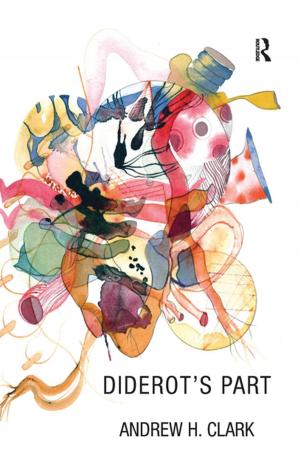| Author: | Marc J. Ratcliff | ISBN: | 9781317018391 |
| Publisher: | Taylor and Francis | Publication: | February 24, 2016 |
| Imprint: | Routledge | Language: | English |
| Author: | Marc J. Ratcliff |
| ISBN: | 9781317018391 |
| Publisher: | Taylor and Francis |
| Publication: | February 24, 2016 |
| Imprint: | Routledge |
| Language: | English |
The eighteenth century has often been viewed as a period of relative decline in the field of microscopy, as interest in microscopes seemed to wane after an intense period of discovery in the seventeenth century. As such, developments in the field during the Enlightenment have been largely overlooked. This book therefore fills a considerable gap in the study of this life science, providing a thorough analysis of what the main concerns of the field were and how microscopists learned to communicate with each other in relevant ways in order to compare results and build a new discipline. Employing a substantial body of contemporary literature from across Europe, Marc J. Ratcliff is able to present us with a definitive account of the state of research into microscopy of the period. He brings to light the little known work of Louis Joblot, re-evaluates the achievements of Abraham Trembley and gives new weight to Otto-Friedrich Müller's important contributions. The book also connects changes in instrument design to an innovative account of microscopical research during the eighteenth century and the rich social networks of communication that grew during this period. Investigating the history of microscopical research from 1680 up to 1800 also shows how scholars progressively established a modern rule on which to shape their new discipline: balancing microscopical magnification with shared vision. This rule developed in response to the diminishing size of the microscopical object during the course of the eighteenth century, from dry minute organisms such as insects, to aquatic minute bodies such as polyps, and finally to aquatic invisible organisms, thus completing the scholar's quest to study the invisible. This book will be essential reading for historians of microscopy, epistemologists, and for historians of the life sciences in the modern period.
The eighteenth century has often been viewed as a period of relative decline in the field of microscopy, as interest in microscopes seemed to wane after an intense period of discovery in the seventeenth century. As such, developments in the field during the Enlightenment have been largely overlooked. This book therefore fills a considerable gap in the study of this life science, providing a thorough analysis of what the main concerns of the field were and how microscopists learned to communicate with each other in relevant ways in order to compare results and build a new discipline. Employing a substantial body of contemporary literature from across Europe, Marc J. Ratcliff is able to present us with a definitive account of the state of research into microscopy of the period. He brings to light the little known work of Louis Joblot, re-evaluates the achievements of Abraham Trembley and gives new weight to Otto-Friedrich Müller's important contributions. The book also connects changes in instrument design to an innovative account of microscopical research during the eighteenth century and the rich social networks of communication that grew during this period. Investigating the history of microscopical research from 1680 up to 1800 also shows how scholars progressively established a modern rule on which to shape their new discipline: balancing microscopical magnification with shared vision. This rule developed in response to the diminishing size of the microscopical object during the course of the eighteenth century, from dry minute organisms such as insects, to aquatic minute bodies such as polyps, and finally to aquatic invisible organisms, thus completing the scholar's quest to study the invisible. This book will be essential reading for historians of microscopy, epistemologists, and for historians of the life sciences in the modern period.















